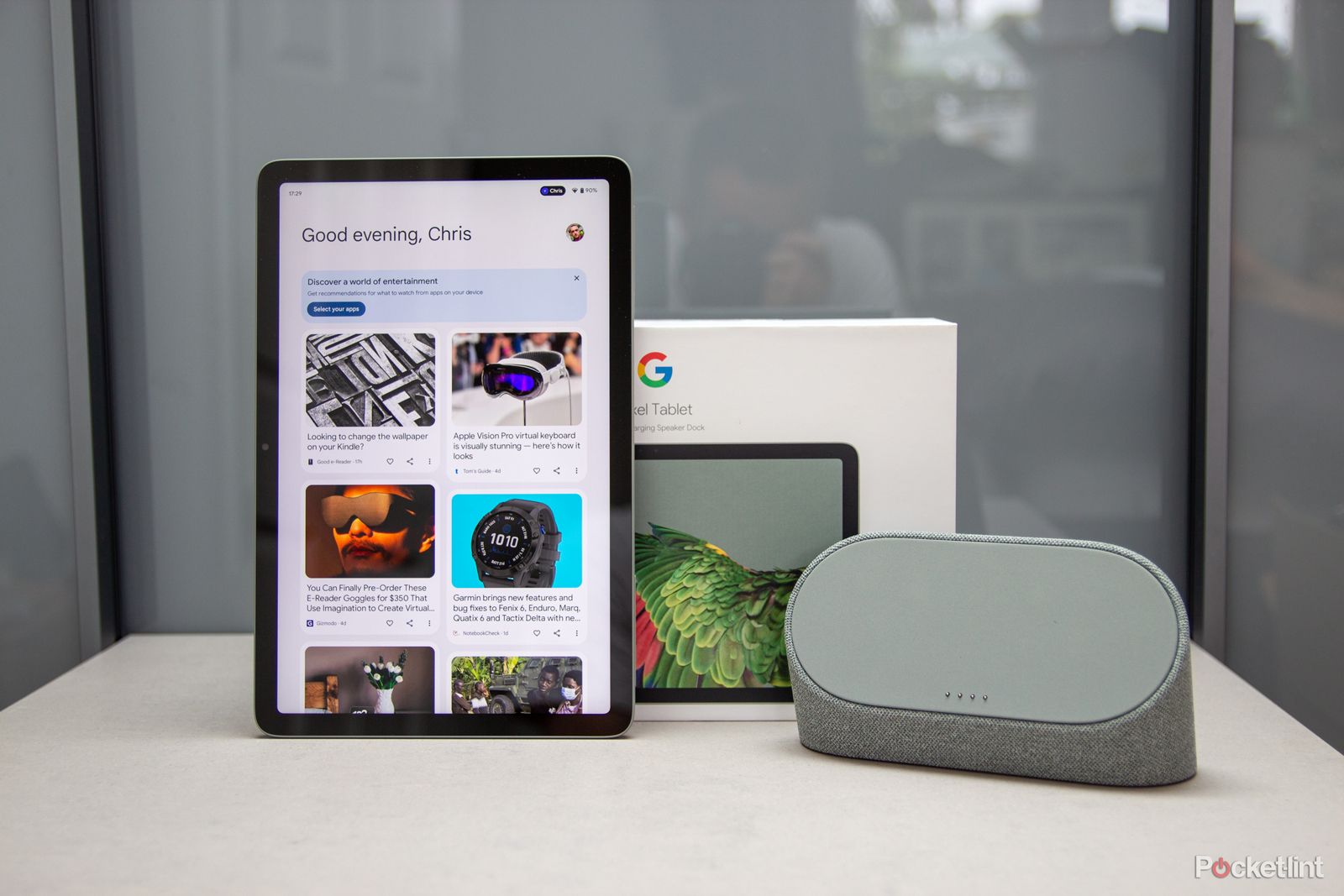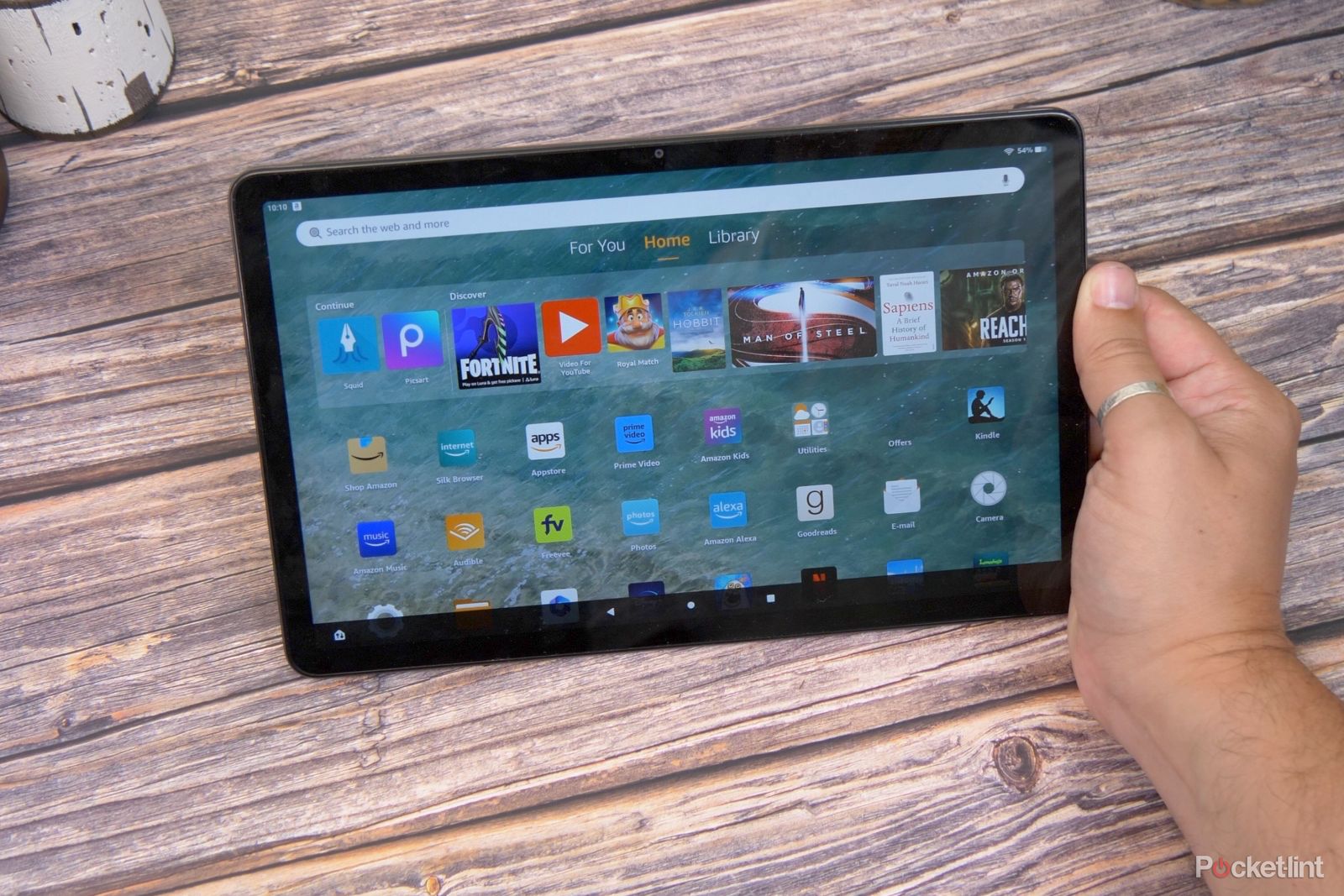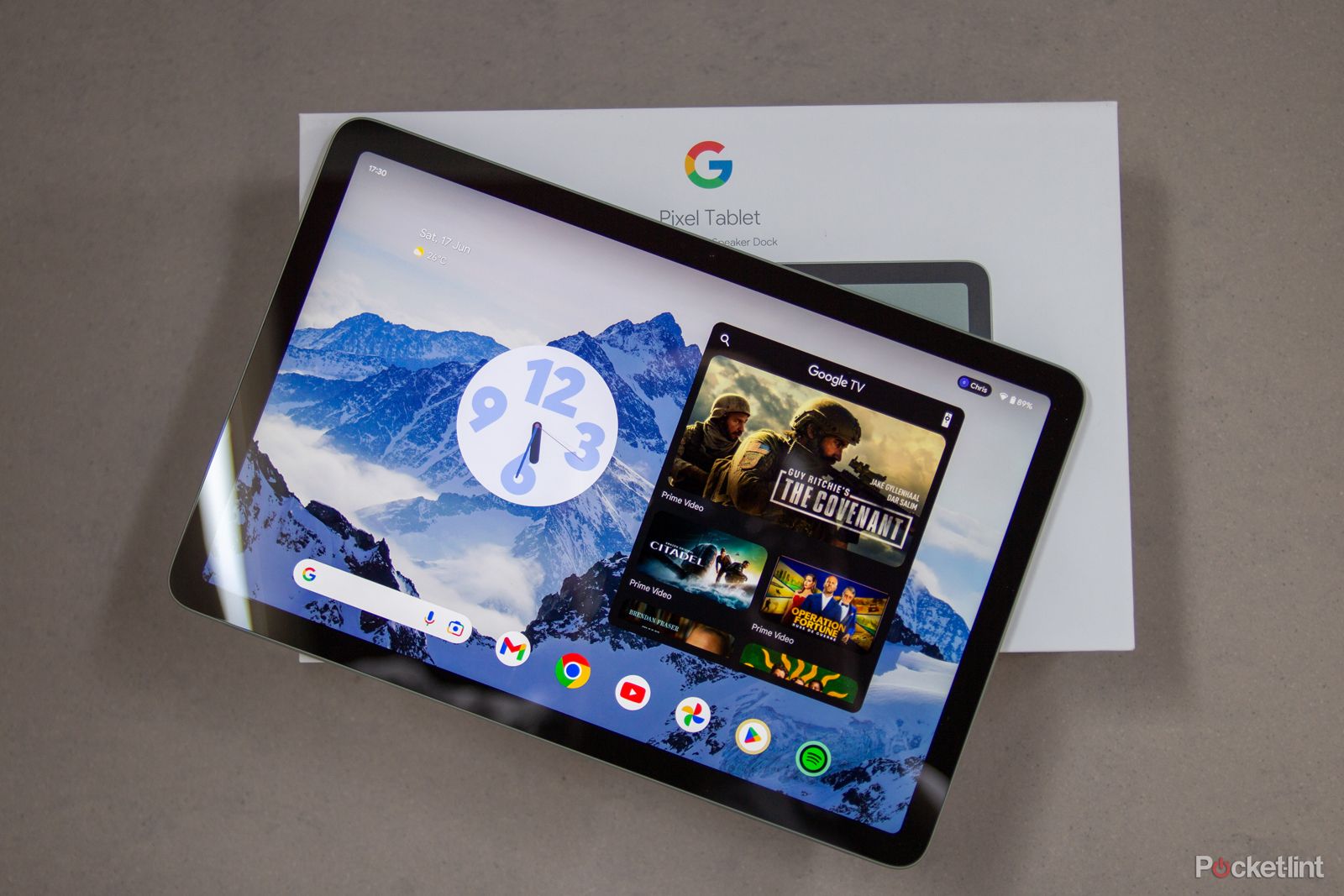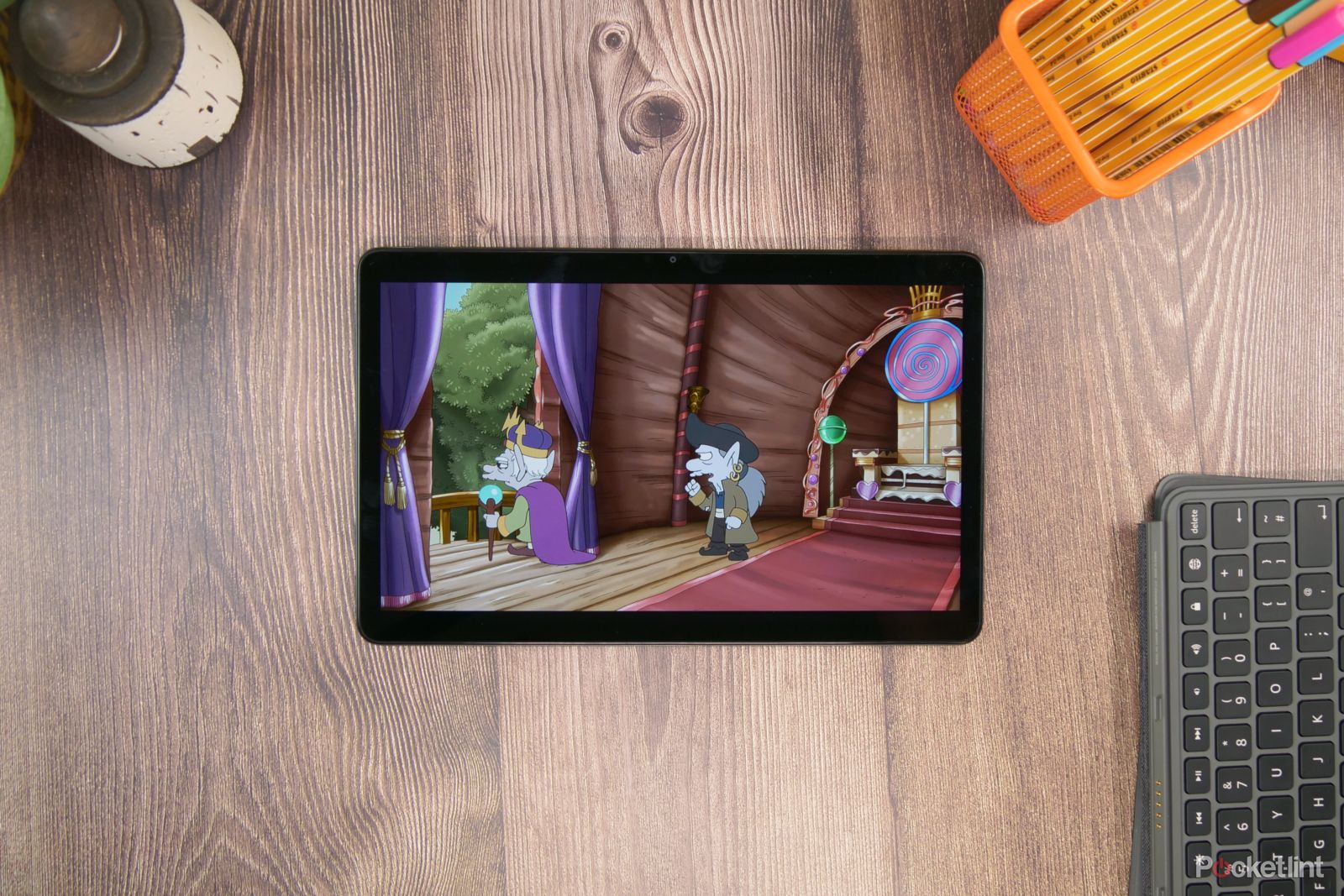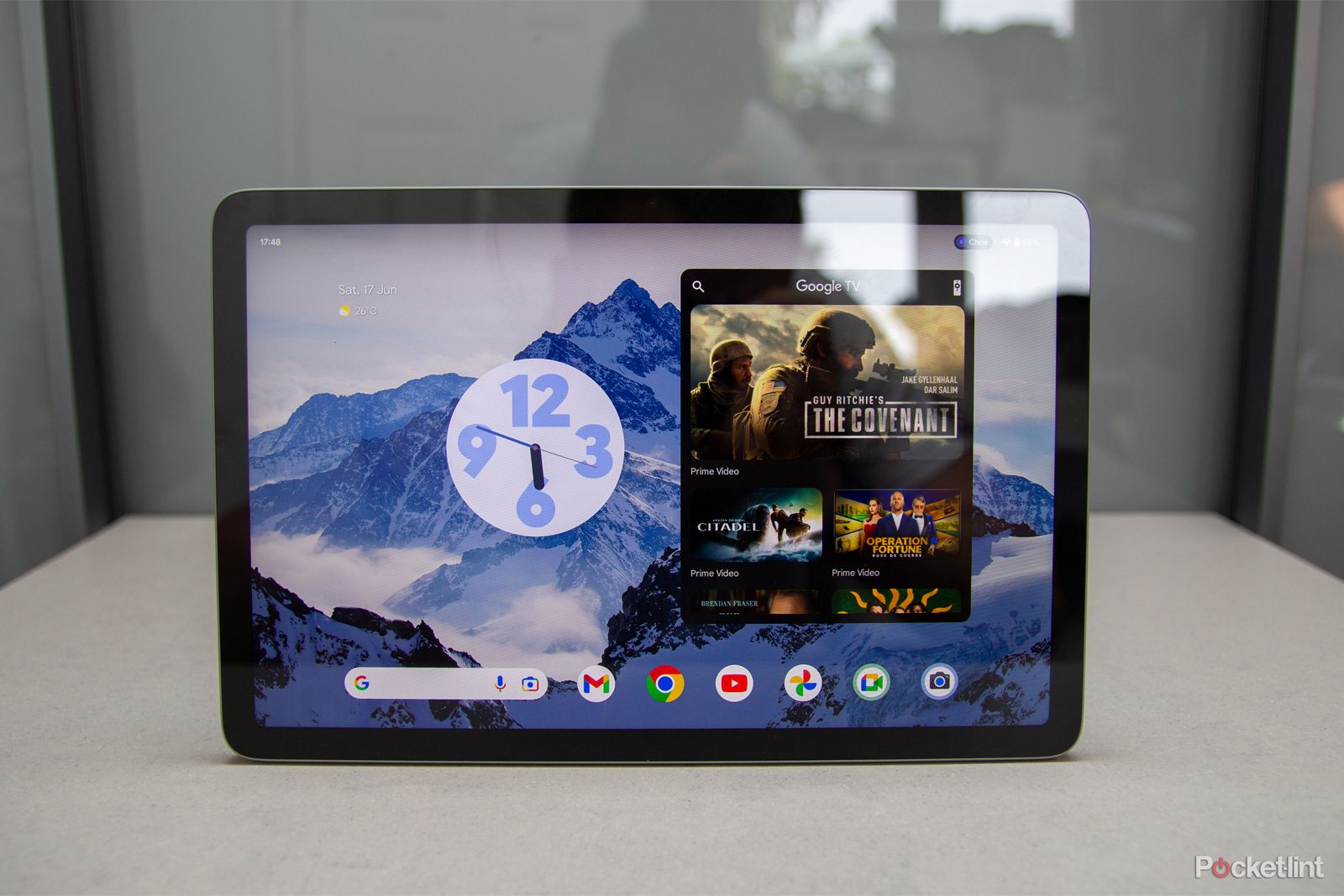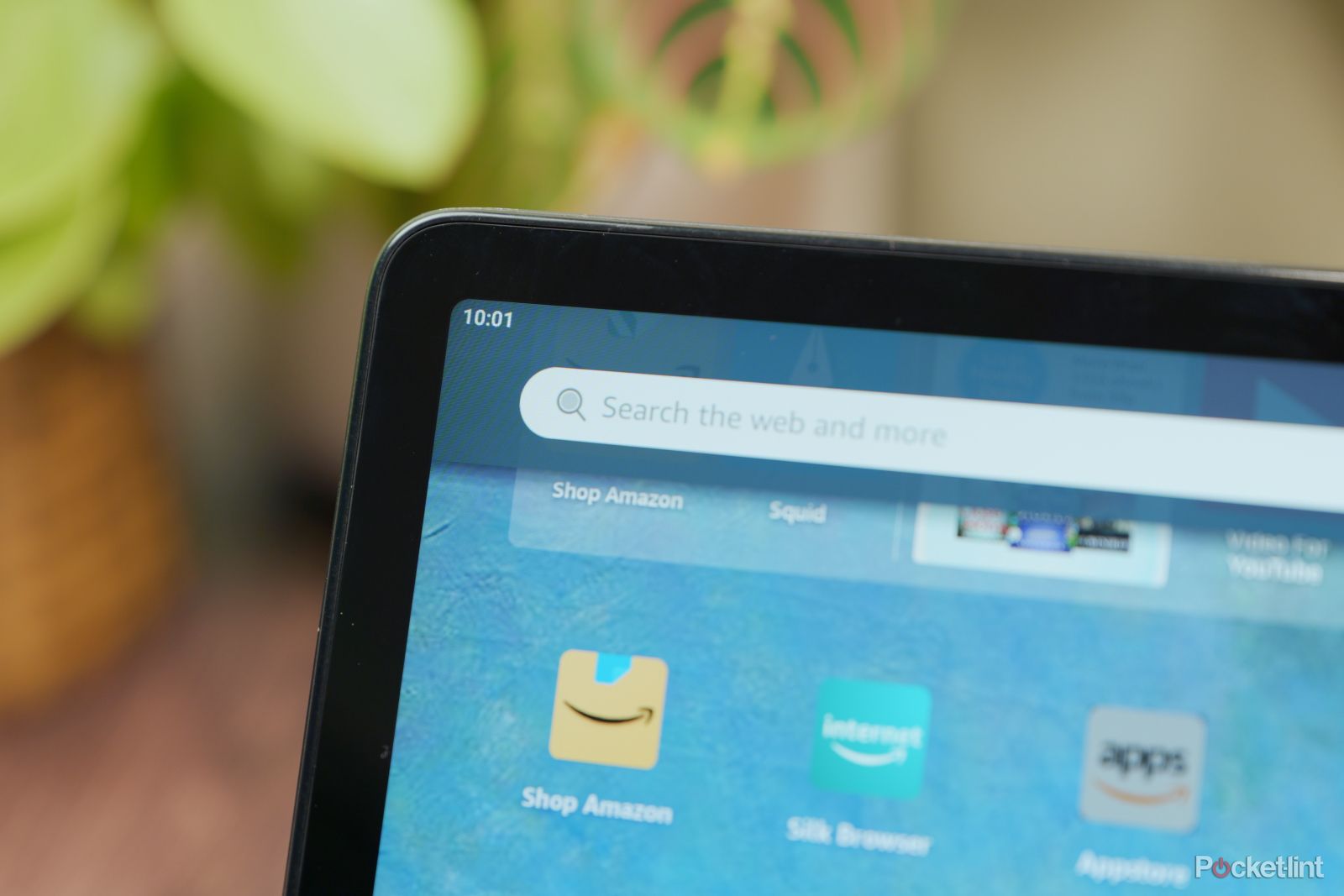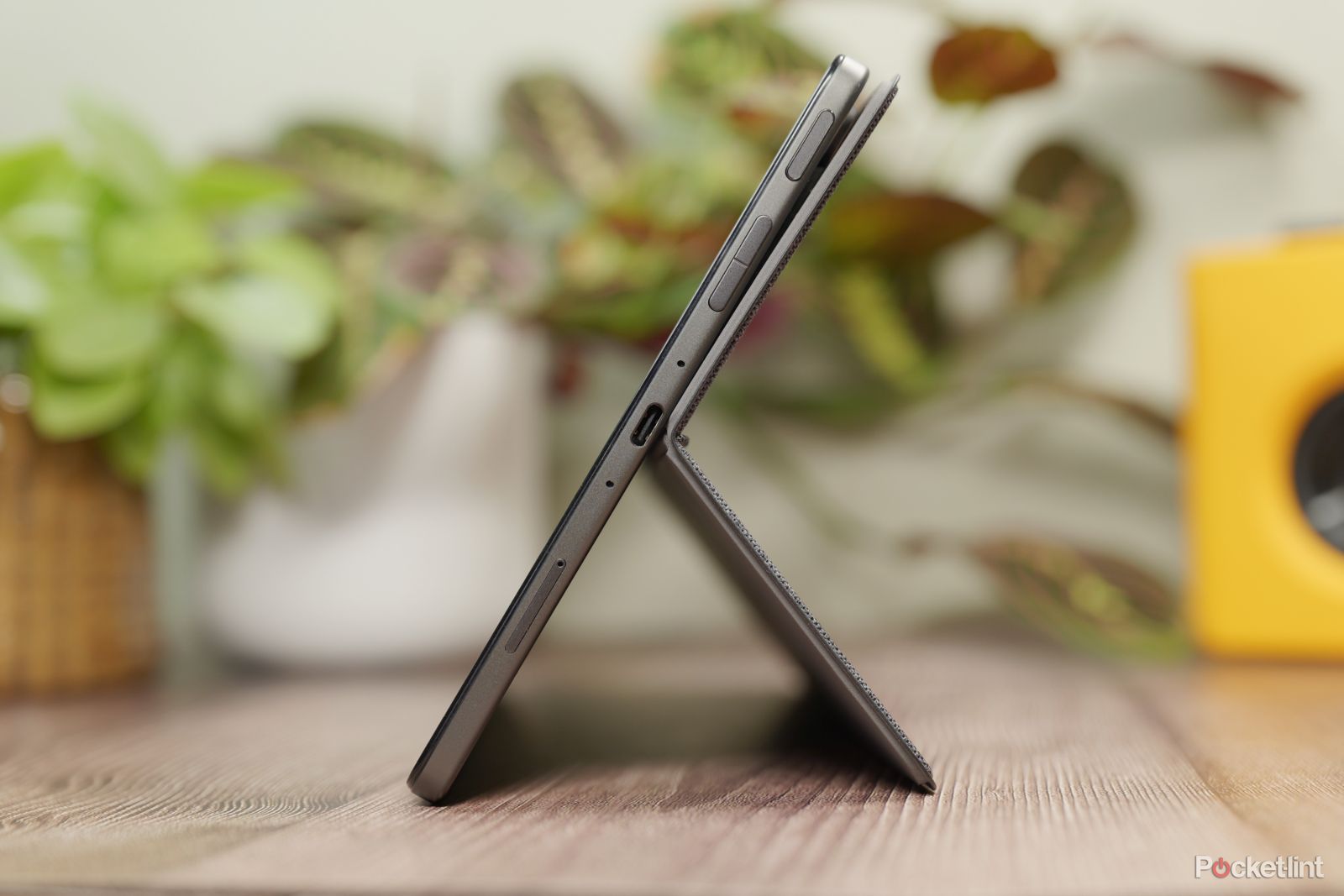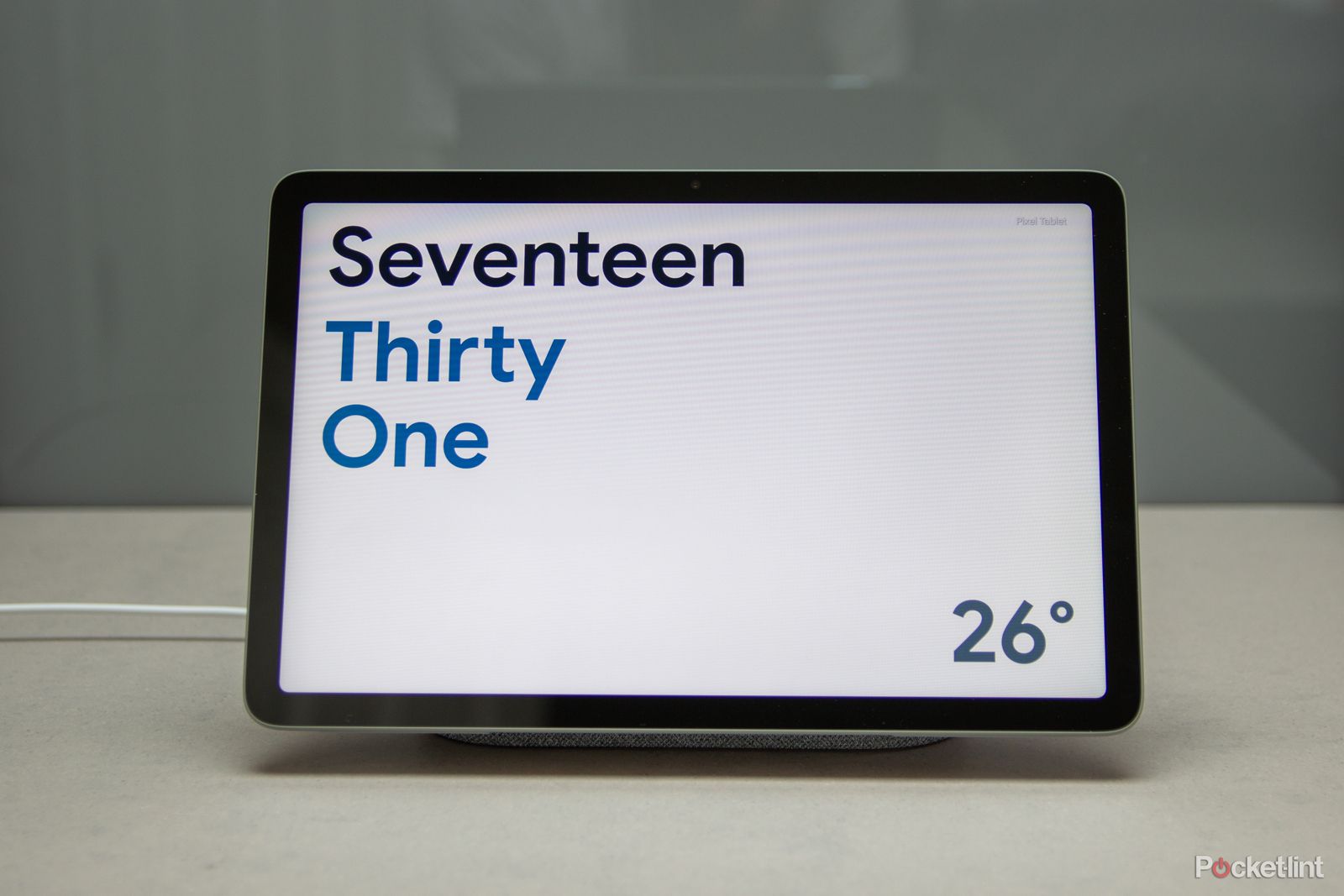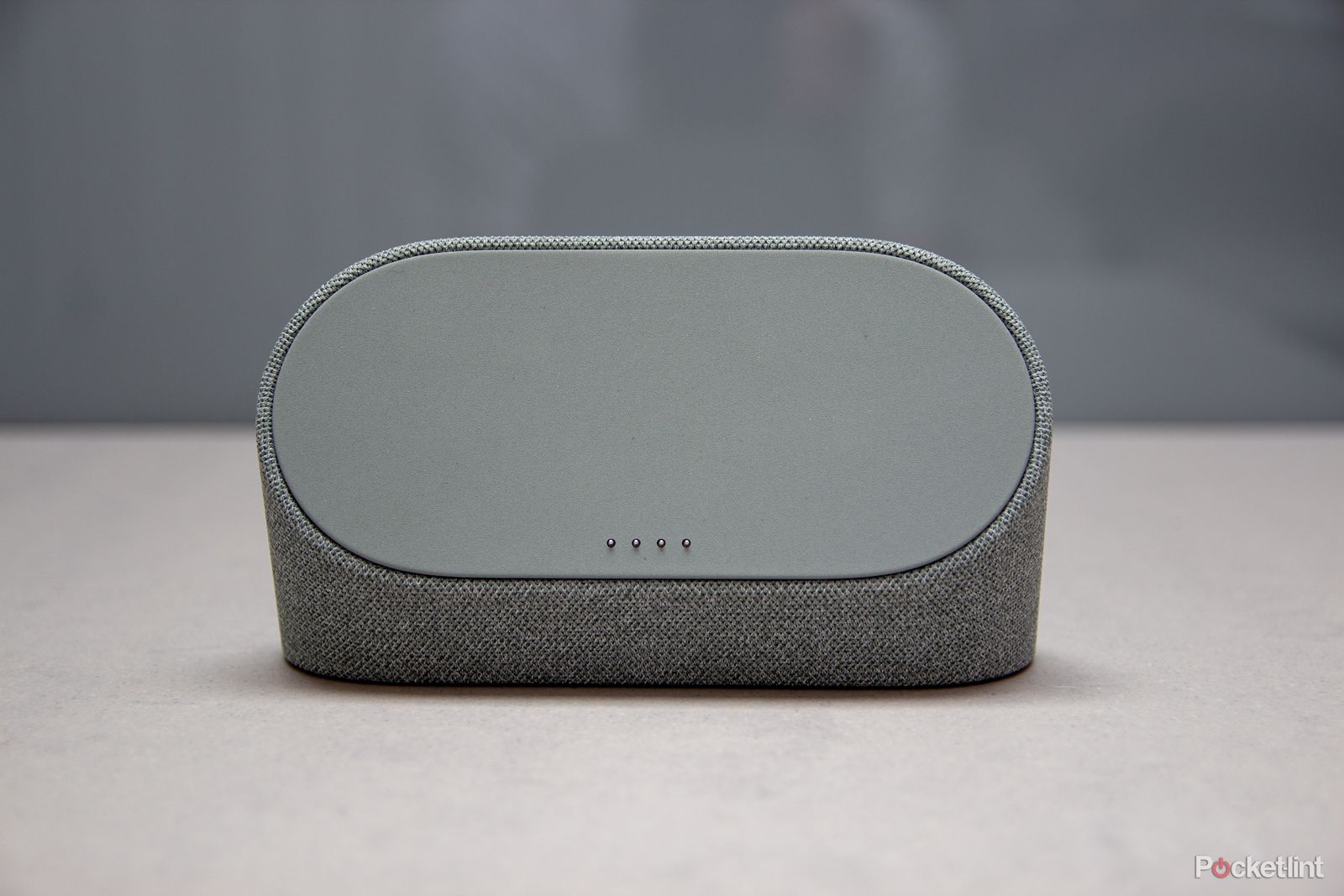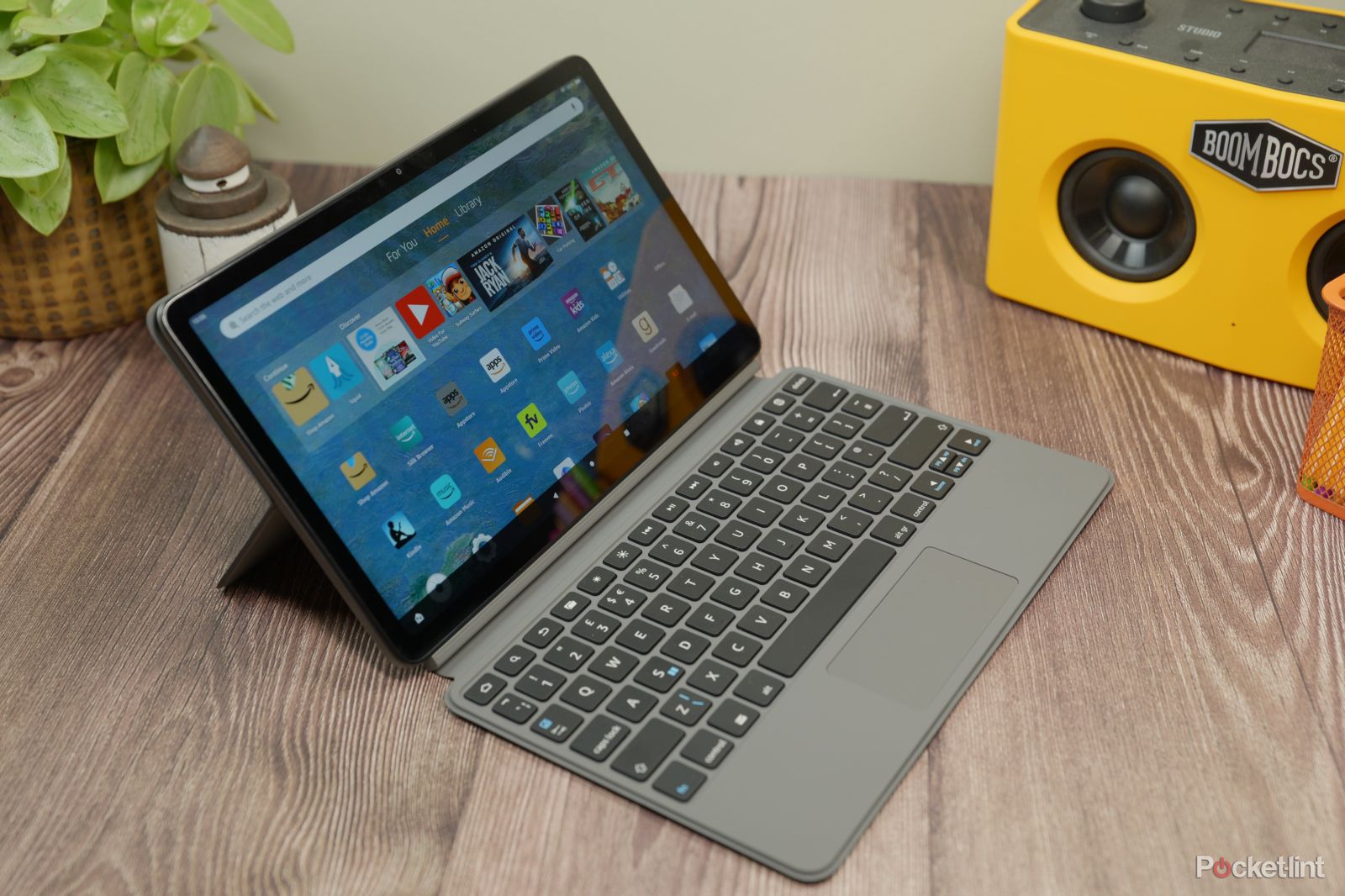-
Google Pixel Tablet
Overall choice
$399 $499 Save $100
The Google Pixel Tablet is a great choice for anyone looking for a mid-range tablet. Its speedy, clean software and plenty of interesting features, along with the included dock, make it a versatile machine fit for every need.
Pros- Incredible software
- Versatile Hub Mode
- Included dock with great quality speakers
Cons- No high refresh rate screen
-
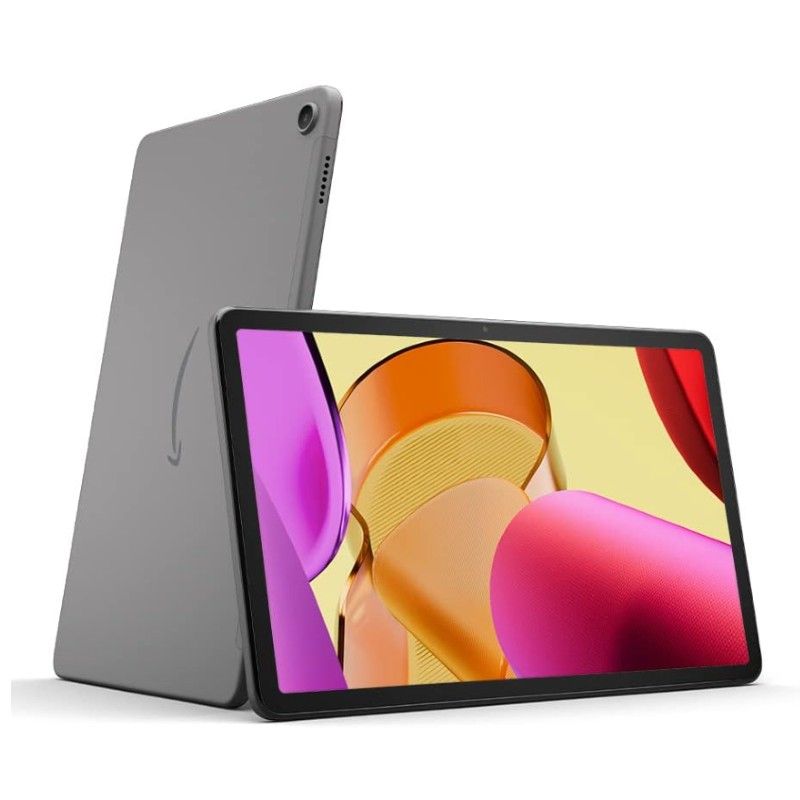
Amazon Fire Max 11
A great Amazon-feature-rich runner-up
$150 $230 Save $80
Amazon’s lower-mid-range tablet is a masterclass in price-to-performance. Although it clearly lacks the refinement of the Pixel Tablet, it makes up for it in the value department, offering an incredible package for a great price.
Pros- Great price-to-performance ratio
- Superb screen for this segment
- Plenty of affordable accessories available
The world of tablets might be dominated by Apple with its iPad range, but that doesn’t mean that Android tablets are lacking — on the contrary. Lately, the competition that some of them have been bringing to Apple has been quite fierce, with the designs getting better, hardware faster, and features more useful.
On the one hand, Amazon has been the king of the budget Android space, offering budget-friendly, reliable tablets for your everyday needs, and pairing them with excellent Alexa integration. However, with the needs of the users getting broader during and after the pandemic, the company decided to expand its portfolio and present its biggest — and most expensive device yet — the Amazon Fire Max 11.
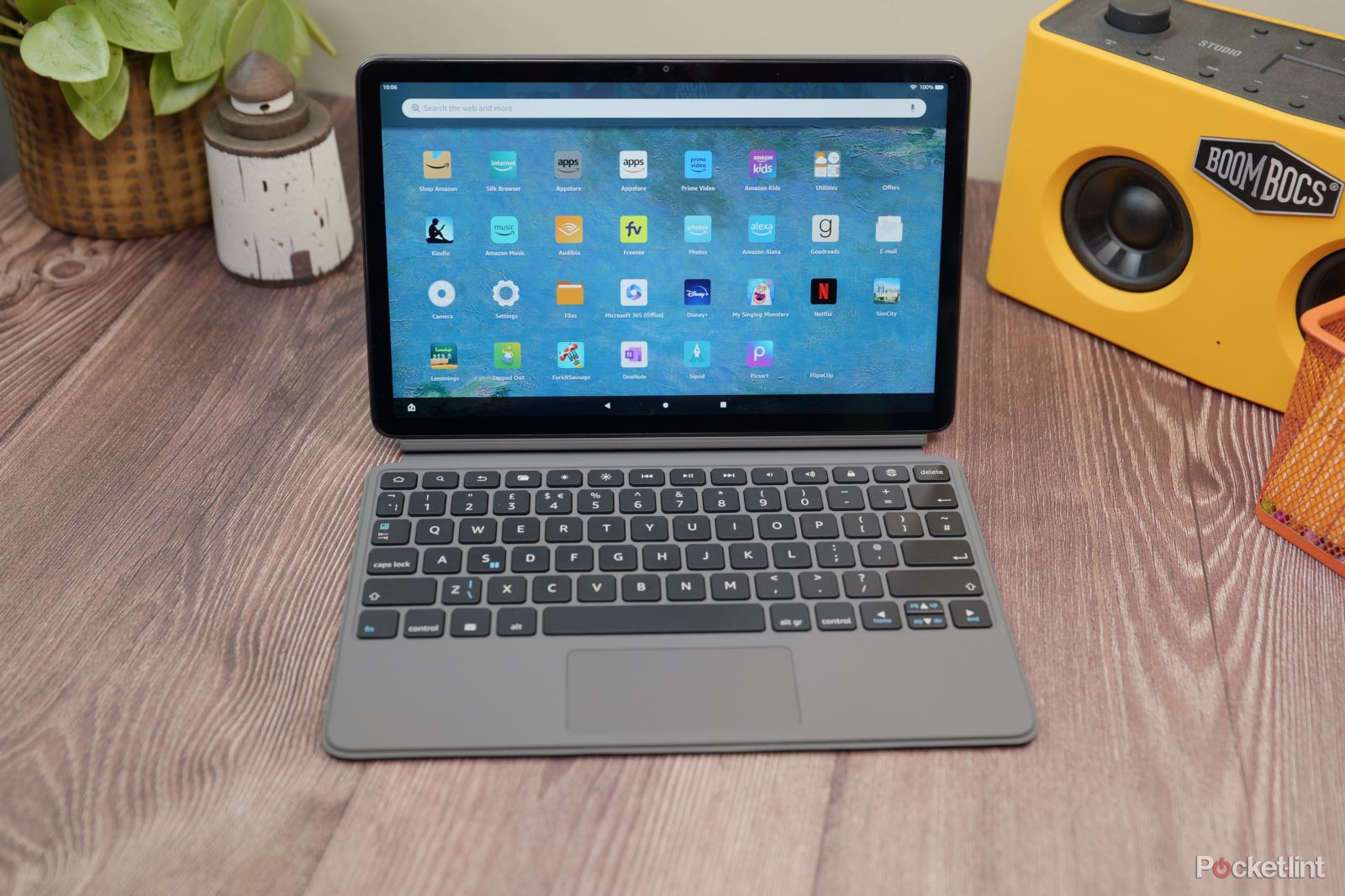
Amazon Fire Max 11 review: Amazon’s best tablet yet
Amazon pushes its Fire tablet range up a notch, delivering a more ‘serious’ tablet that’s still very affordable.
On the other hand, the manufacturer of the best Android phone so far — Google with its Pixel 8 — also tried their hand at creating a tablet. The Google Pixel Tablet is a unique device, with a bit of a different take on the whole tablet thing than the rest of the industry, and probably the most similar to what Amazon has been doing over the years. So, how do these two devices compare and which one should you get? Here’s everything you need to know before deciding between the Google Pixel Tablet and the Amazon Fire Max 11.
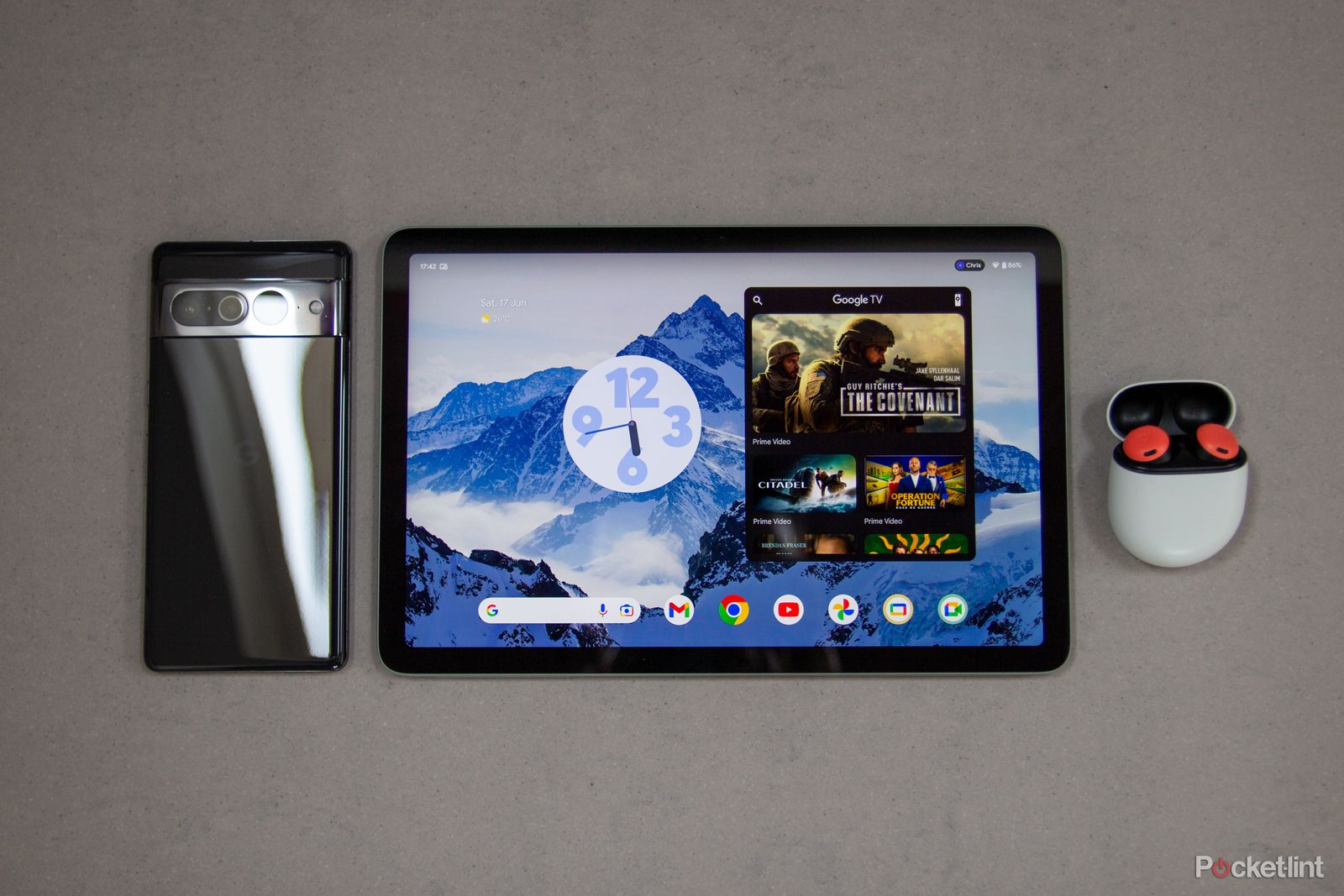
Google Pixel Tablet review: Hi honey, I’m (Google) home
Google’s return to tablets sees optimised apps for the larger display, a focus on smart home integration – but should you buy the Pixel Tablet?
Price and availability
June 2023 was quite a month for the Android tablet market, as both the Pixel Tablet and the Amazon Fire Max 11 were released then – and just one week apart. Amazon’s tablet came first, landing on store shelves (or rather Amazon’s store page) on 14 June, while the Pixel Tablet was released on 20 June.
Both of these tablets are aiming for a similar type of buyer – someone looking for a medium-sized, mid-range tablet – but doing so from two different angles. Google is pushing from the high-end of the mid-range market, as the Pixel Tablet in its base 8/128GB configuration costs $499, while the 8/256GB version will set you back $599. However, there is a catch here, and it’s a positive one. At this price, you also get the Pixel Tablet Dock, which is used not only for turning your device into a stationary smart-home companion but also includes quite powerful speakers and makes for a surprisingly good music listening experience.
On the other hand, Amazon is once again attacking from the lower end of the price spectrum. The base 4/64GB model of the Fire Max 11 is only $229, another catch here too. This version comes with lock screen ads, so you’ll have to deal with being advertised, even on your own device, when going for this configuration. Fortunately, you can pay a bit more to get rid of the ads. The 4/64GB version without ads will set you back $244, while the 4/128GB version is $279 without ads.
Specifications
Speaking of storage options, let’s also look at the rest of these tablets’ specifications, as they are quite a bit different. The Google Pixel Tablet is equipped with Google’s Tensor G2 chip. The same you’ll find in the Pixel 7 and Pixel 7 Pro.
It’s a great flagship chip that focuses on machine learning performance, while still being very capable of graphical performance. It’s paired with the aforementioned 8GB of RAM and 128/256GB of storage, and combined with the incredibly optimized system of the device makes for a great, smooth experience. Moreover, you get a 7020 mAh battery which should last up to 12 hours of screen-on time, and it supports 15W charging. It comes equipped with 8MP front and back cameras. It’s also worth mentioning that the Pixel Tablet is the first Android tablet with a built-in Chromecast, for easy switching between your phone and your tablet.
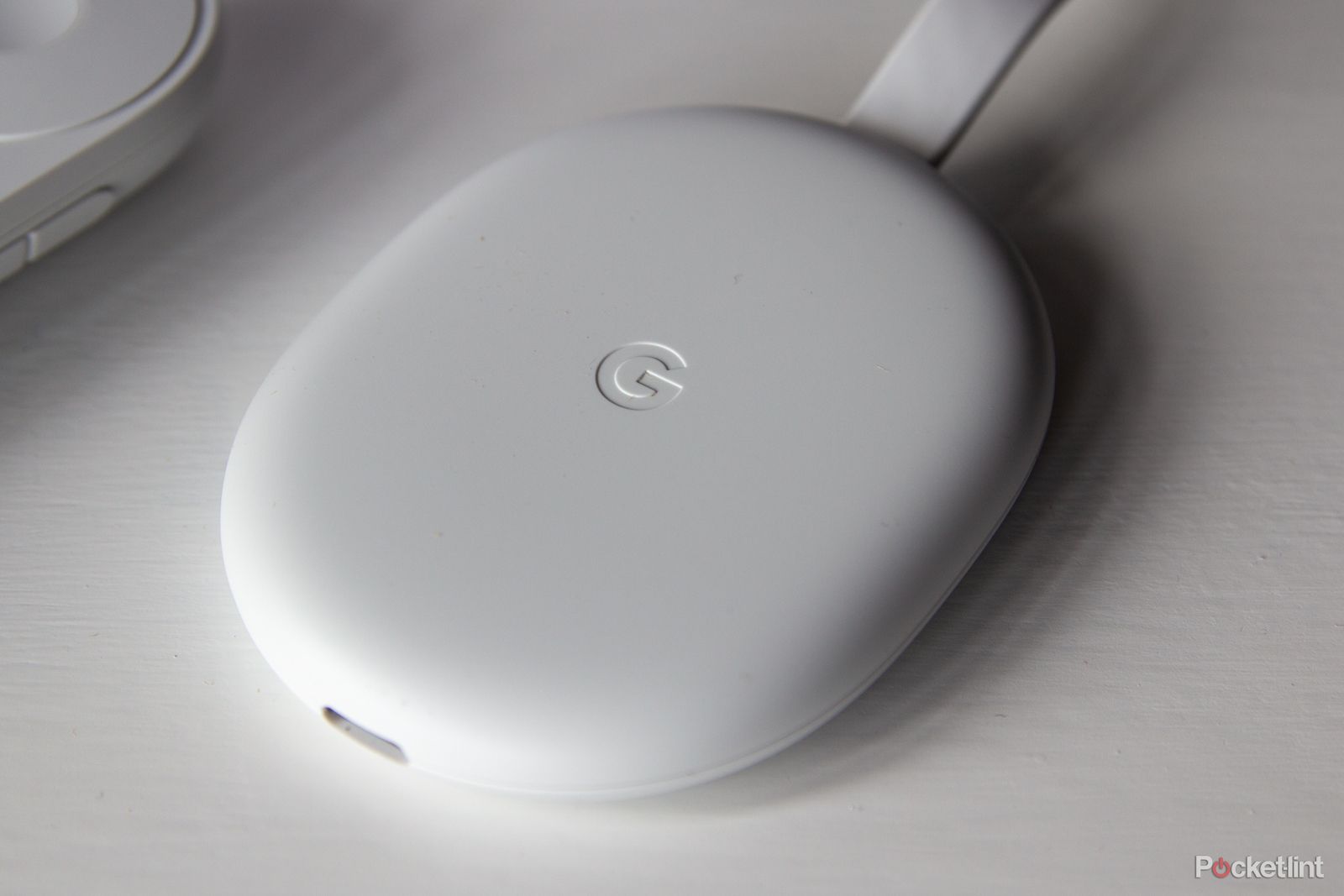
What is Google Chromecast and why should you care?
Google Chromecast is a device you can use to send things from your small screen phone to your big screen TV. But it can be tricky to comprehend…
Amazon’s Fire Max 11 is in a bit of a different league performance-wise. It’s equipped with the MediaTek MTK8188J, a recent lower-mid-tier SoC with performance similar to that of the Snapdragon 695. It’s paired with 4GB of RAM and 64/128GB of storage, the latter of which can be expanded with a microSD card. The tablet itself is definitely not as speedy as its competitor in this comparison, and Amazon’s FireOS software also does not help, as it’s visibly less responsive than Google’s stellar UI. However, in everyday tasks, you should feel much of a difference performance-wise.
The Fire Max 11 is also equipped with an 8MP camera at the back and the front and promises 14 hours of battery life. The charging speed, however, is a bit lacking – you only get a 9W charger for the device.
-
Google Pixel Tablet Amazon Fire Max 11 Brand Google Amazon Storage 128GB or 256GB 64GB or 128GB CPU Google Tensor G2 2.2Ghz octa-core Memory 8GB 4GB RAM Operating System Android 13 Fire OS Battery Up to 12 hours 14 hours Camera (Rear, Front) 8MP f/2.0 rear + 8MP f/2.0 front landscape 8MP autofocus, 8MP Display type 10.95-inch LCD, 2560 x 1600, 500nits 11-inch, 2000 x 1200 pixels, 217ppi Measurements 258 x 169 x 8.1mm, 493g 259 x 164 x 7.5mm Colors Porcelain, Hazel, Rose Grey
Design
In general, the design of both of these tablets is quite conservative. They are both regular-looking slabs with decently slim bezels, no notch and a single camera on the front and the back.
Once you get into the details, there are some differences though. The Pixel Tablet does look and feel more premium, with better build quality and materials, but that’s not to say that the Fire Max 11 feels poorly made. They also differ in the color selection. Amazon’s tablet is only available in gray, while you can buy Google’s device in two different colors: Porcelain, Hazel and Rose.
The other very noticeable difference between the two tablets is their screens. The Google Pixel Tablet is equipped with a crisp, 10.95-inch IPS panel with a resolution of 2560 x 1600px and a 60Hz refresh rate. The refresh rate is, admittedly, not that great. Google should have gone for something faster, like some other best Android tablets, but the screen itself is bright, vivid and detailed, making it a great choice if you often watch movies or YouTube videos on your tablet. It’s also quite color-accurate, so you might want to pick it up to try your hand at drawing on a tablet.
Amazon Fire Max 11, on the other hand, comes equipped with an 11-inch IPS display with a 2000 x 1200px resolution and the same 60Hz refresh rate. For the price, it’s a good screen, albeit a bit on the dark side, so watching content outside might be out of the question. It’s plenty sharp enough with good viewing angles, but it pales in comparison to Google’s display. Once again, the price difference is quite visible here.
Software
The difference you’ll feel the most in your daily use of the machine is their different software and completely alternative approaches to what the user should be able to do with their machine.
Let’s start with the Pixel Tablet. As you’d expect from Google’s devices, it’s running what’s called a PixelUI. Which is a clean version of Android that the company equips all of its phones, and now its tablets. It’s undoubtedly one of the best (or possibly the best) versions of Android, offering incredibly smooth performance and focused on great user experience with a lot of AI and machine learning-focused improvements to make using the tablet even more enjoyable.
What’s more, you can also expect timely and long-lasting software support. Google promises at least three years of Android updates and five years of security updates for the tablet, making it safe to use for years to come. With how smoothly the whole thing runs thanks to the powerful SoC and the optimized Android version, you can also expect it to work great even five years down the road. You won’t only get these updates for a long time, but you’ll also receive them quickly after their introduction. The Pixel Tablet was released with Android 13, but it has already received the Android 14 update, and the company wants to make sure that your software is always up-to-date, and you have access to the newest features.
Amazon’s approach to the users’ software experience is completely different from Google’s. While the latter goes for a stripped-back system with a lot of room for user freedom, Amazon goes for something completely different. The software running on the Fire Max 11 is still based on Android, but it’s a heavily modified version of the system that is made in order to integrate well with the rest of Amazon’s products.
This means that, on the one hand, if you’re using other Amazon services, the tablet will work great with all of them, making adding it to your ecosystem a breeze. Using Prime Video, Audible or shopping on Amazon has never been that easy, and the added convenience of Amazon Cloud and other baked-in features make the tablet a great choice if you’re already using these services.
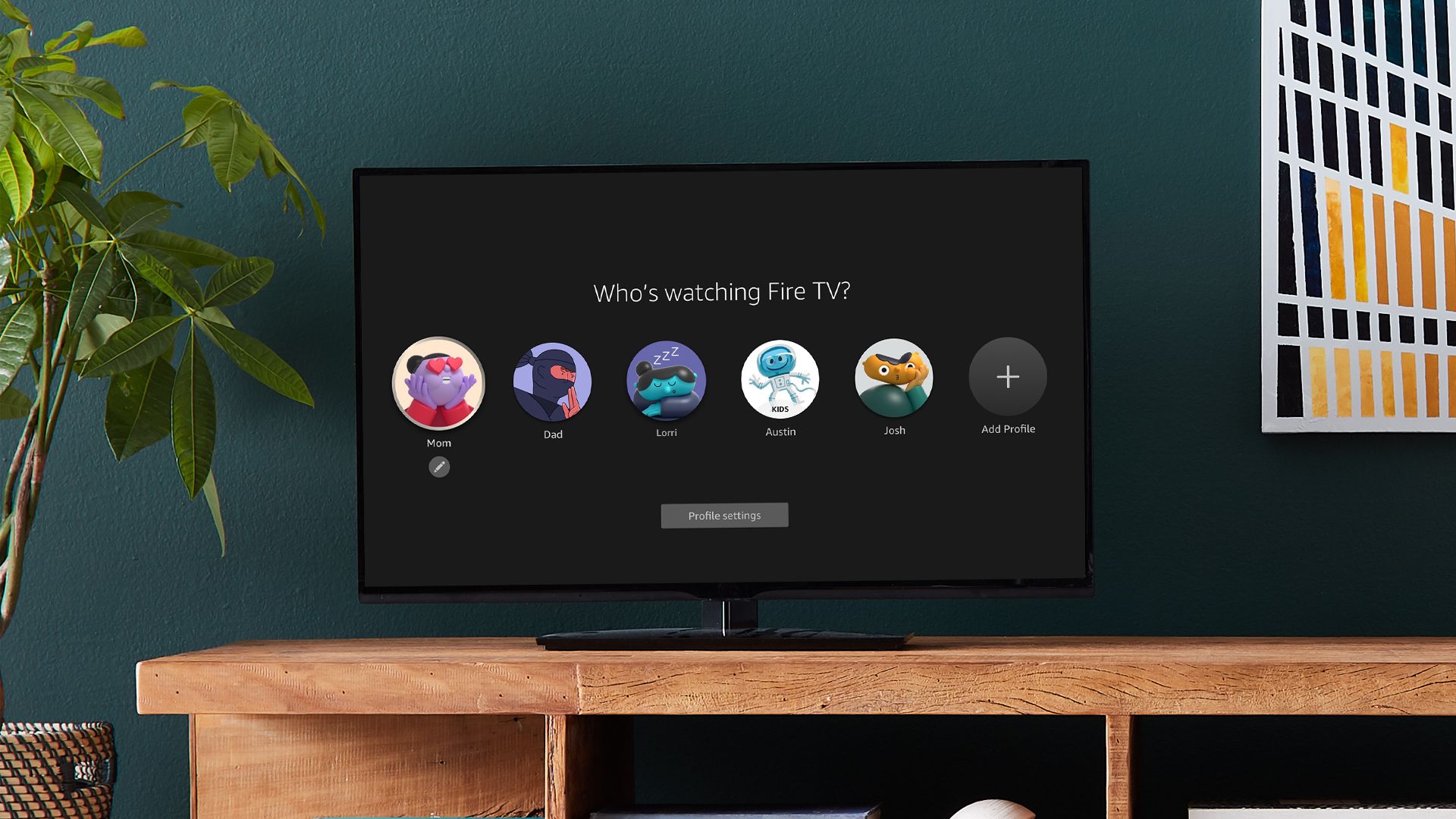
How to create Amazon Prime Video profiles for your family
Amazon’s Prime Video service offers individual user profiles for each family member. It’s a pretty simple feature to set up, too. Here’s how.
However, Amazon’s software is also much more limited than what Android usually offers. Your only source of apps will be the Amazon Store, and its selection is much more limited than the Google Play Store. What’s even worse, while you can use popular office suites such as Office 365 from Microsoft, you don’t have access to Google services on Amazon’s tablets, making it a pain to use such basic services as Gmail. Overall, while the Pixel Tablet offers you a smooth experience and lightweight software, Amazon’s system is much more limited and focused on pushing you towards Amazon’s proprietary services.
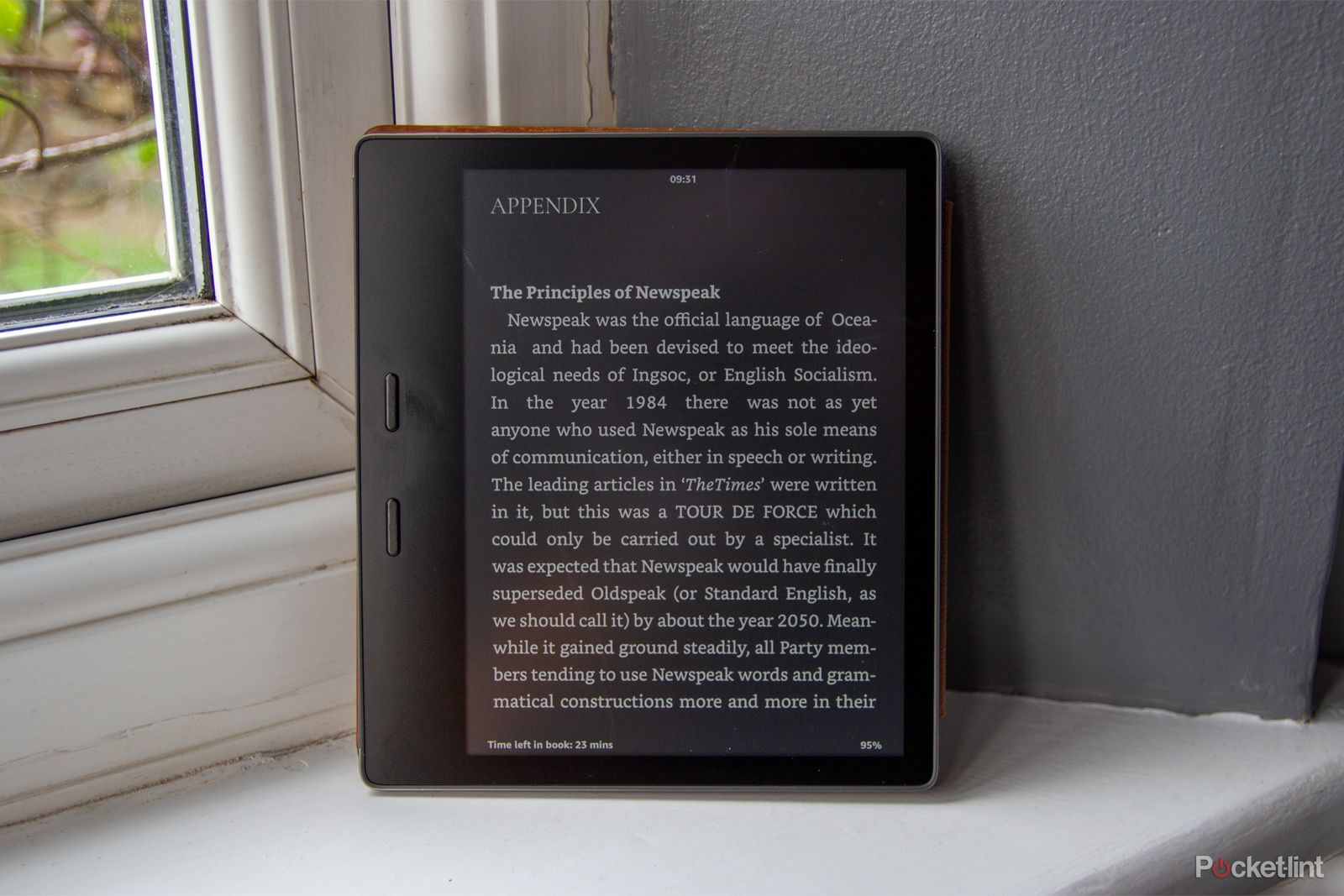
Should I get a Kindle for reading books and can I stop the display flashing on page turns?
Debating buying a Kindle eReader? I’ll explain if it could replace paper books or an iPad – and how to manage the display settings.
Lastly, I also have to mention another thing that Amazon tablets are notorious for; the ads. If you buy the cheaper version of the tablet, you have to be ready to see advertisements on your lock screen. It’s quite a sight being advertised on your own tablet, so you have to be ready for that if you opt for saving some change on the more budget-friendly, ad-supported version.
Dock mode
Both Amazon and Google are big in the smart home market, and it shows in its tablets as well. Both of these tablets come equipped with a specialized Hub Mode, turning them from portable tablets into stationary smart home command centers.
Amazon’s implementation is called a Device Dashboard and works great with all your Echo products, as well as Alexa. It essentially turns your Fire Max 11 into an Echo Show, so you can just get the tablet and forgo buying a smart display from Amazon.
The Pixel Tablet also has a similar trick up its sleeve. It comes with a dock that allows you to turn it into something like the company’s Nest Hub. You get access to your smart home controls, you can set up your docked wallpapers and do all the features you’d expect from a smart display. For both of these devices, the dock mode is a great way to expand their usability.
Accessories
Speaking of the Pixel Tablet Dock – let’s look at the accessories available for each device. The great thing about tablets is how versatile they are when paired with the correct accessory. If you want a productivity machine, you can easily attach a keyboard. Do you want to use it to get your creative side satisfied? Grab a stylus and start drawing. There are many more use cases, you just need to get a bit creative with how you accessorize.
The Google Pixel Tablet is first, and in the box, you’ll find the most significant accessory for this device, its dedicated dock. The dock is a nicely fabric-covered device, which enables the Pixel Tablet to enter hub mode, and is equipped with speakers to enhance the audio capabilities of the tablet. What’s more, it also charges your device, so it’s always ready to take it with you.
Aside from the included dock, there are a number of other accessories that you might want. Google sells a dedicated Pixel Case with a nice, high-quality metal stand, but that’s all for the first-party accessories. The company said that it’s working on a dedicated keyboard case and a stylus for the tablet as well.
However, all is not lost, as there are plenty of keyboard cases to choose from. The stylus is usually another story, as many tablets use proprietary stylus solutions. Fortunately, not the Pixel tablet. Google’s device uses a common USI 2.0 standard for its stylus support, meaning that you can choose from various different styluses that support that standard, leaving you to choose what suits you and your needs best.
Amazon Fire Max 11 does not, unfortunately, come with a dock in-box, but you’d expect that, seeing how much lower the price of the device is. However, there are a few bundles that you can buy straight from Amazon. You can choose to get a Stylus bundle (4/64GB variant with no ads costs $264) or a Keyboard and Stylus bundle (4/64 with no ads costs $355).
Even better, Amazon’s tablet also supports the USI 2.0 standard for styluses, meaning that you can pick and choose from all those options on the market, so you’re not limited to the one that Amazon sells.
Google Pixel Tablet vs Amazon Fire Max 11: Which one should you get?
Based on our breakdown and hands-on testing of both products, we’ve concluded that the Google Pixel Tablet is a much better choice for your next tablet in virtually every category, save for the price, of course. With its better performance, build quality and much more versatile and capable software, it’s a great buy that will be fast and responsive now, and last you quite a few years. Plus, with the added accessories, in its downtime, the Google Pixel Tablet can become the centerpiece of your smart home system, making it not only great for your entertainment, but also an extremely useful utility tool.
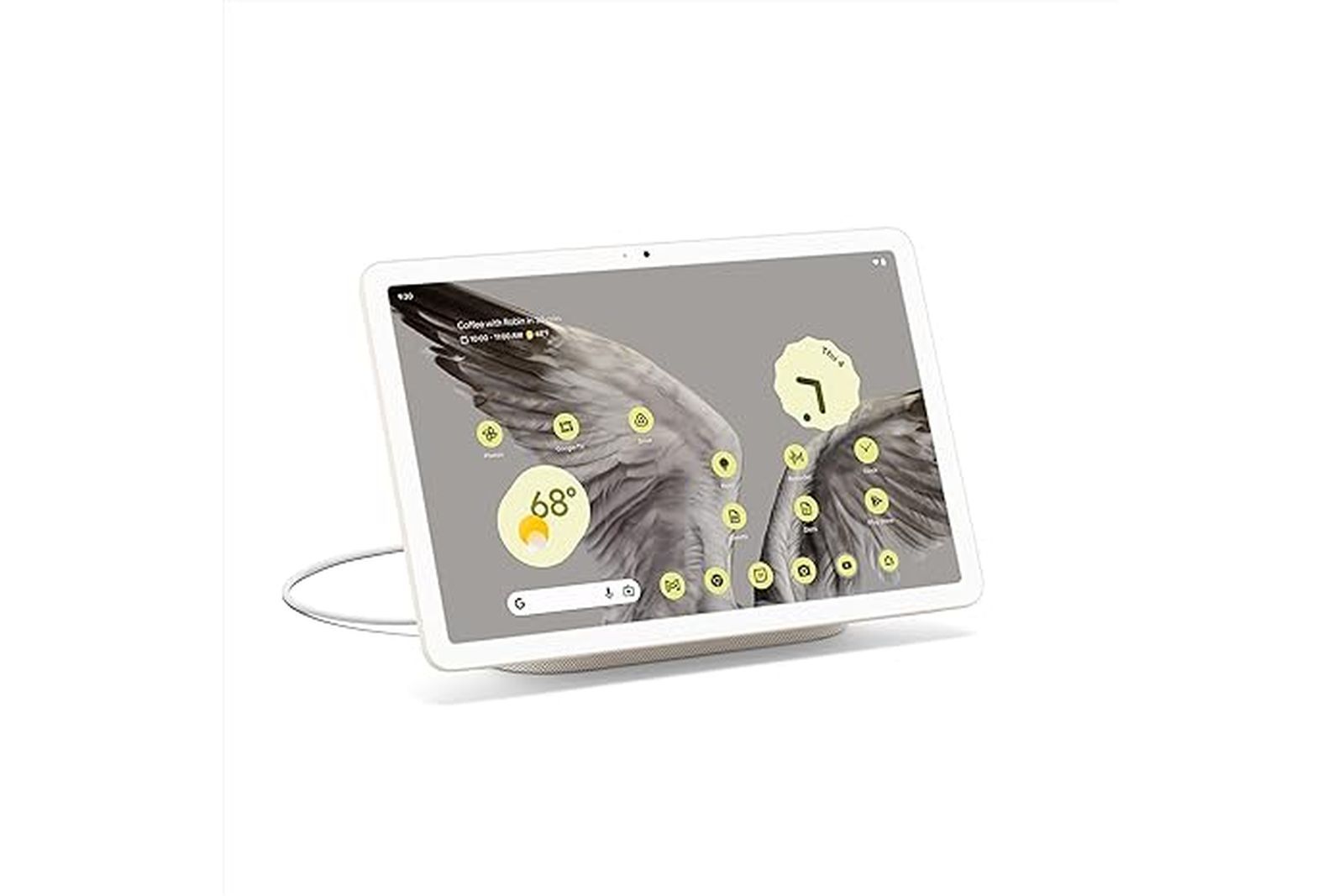
Google Pixel Tablet
$399 $499 Save $100
However, this is not to say that the Amazon Fire Max 11 is a bad choice. On the contrary, for the price, it’s an awesome choice if you’re looking for a machine with a good screen, plenty of available accessories and easy access to your Amazon ecosystem. It also doubles as an Echo Show, so it will do just as great of a job as part of your smart home system as Google’s tablet. What’s more, you get access to a pretty incredible and versatile set of accessories, making Amazon’s tablet a great fit for students, as an entertainment machine, or just to take some quick notes when running around. That is, of course, if you can live with the limitations of Amazon’s software.
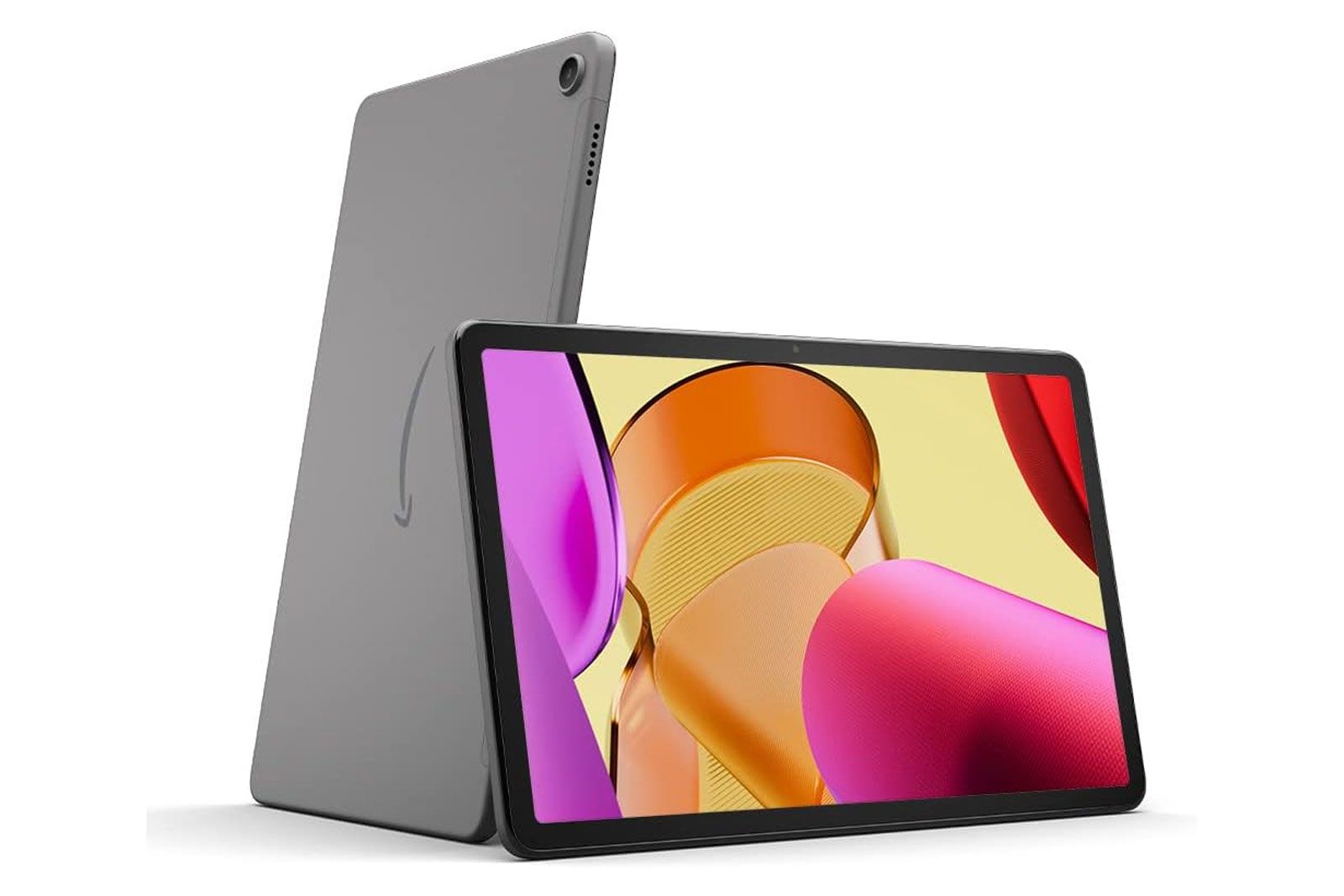
Amazon Fire Max 11
$150 $230 Save $80
Trending Products

Cooler Master MasterBox Q300L Micro-ATX Tower with Magnetic Design Dust Filter, Transparent Acrylic Side Panel, Adjustable I/O & Fully Ventilated Airflow, Black (MCB-Q300L-KANN-S00)

ASUS TUF Gaming GT301 ZAKU II Edition ATX mid-Tower Compact case with Tempered Glass Side Panel, Honeycomb Front Panel, 120mm Aura Addressable RGB Fan, Headphone Hanger,360mm Radiator, Gundam Edition

ASUS TUF Gaming GT501 Mid-Tower Computer Case for up to EATX Motherboards with USB 3.0 Front Panel Cases GT501/GRY/WITH Handle

be quiet! Pure Base 500DX ATX Mid Tower PC case | ARGB | 3 Pre-Installed Pure Wings 2 Fans | Tempered Glass Window | Black | BGW37

ASUS ROG Strix Helios GX601 White Edition RGB Mid-Tower Computer Case for ATX/EATX Motherboards with tempered glass, aluminum frame, GPU braces, 420mm radiator support and Aura Sync


